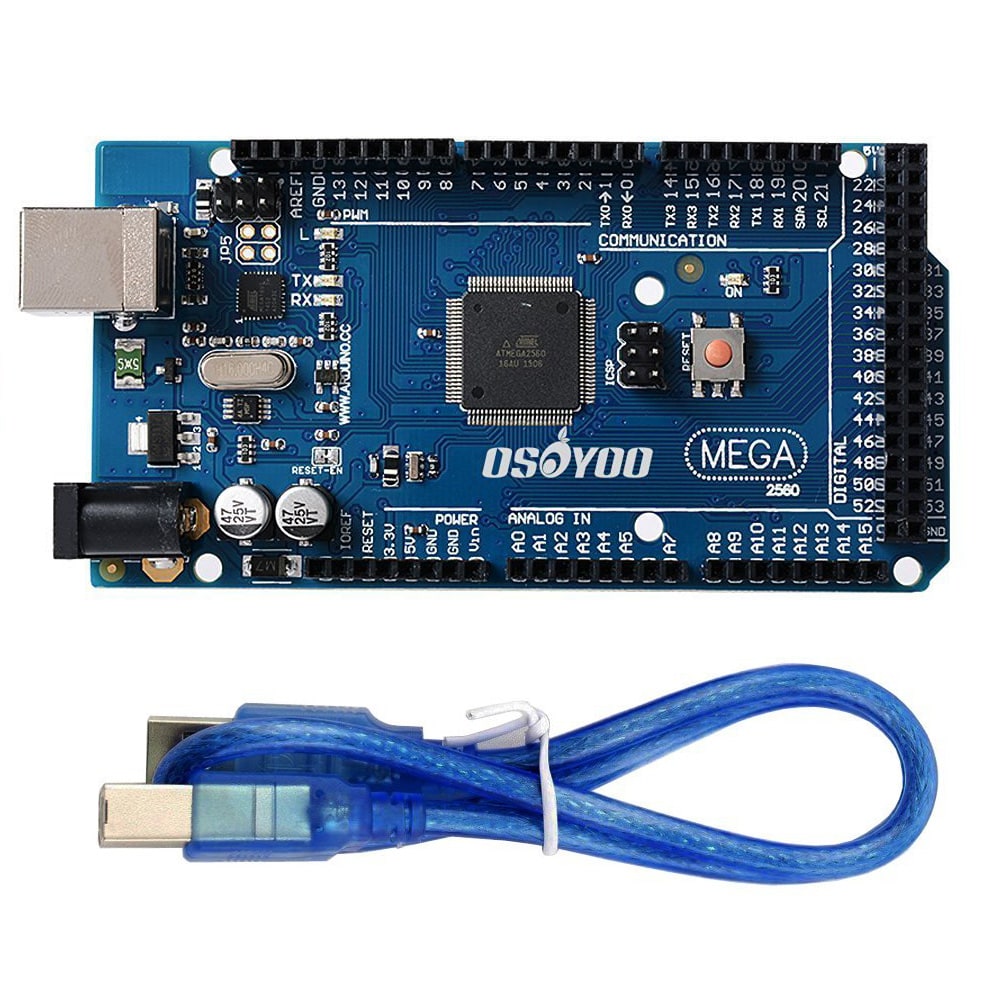The Following table shows the comparison between the two popular microcontroller Board boards. It is primarily a comparison between Osoyoo Uno vs Mega 2560:
| Features |
Osoyoo Uno |
Osoyoo Mega 2560 |
| Microcontroller (MCU) |
ATmega328P |
ATmega2560 |
| Operating Voltage of the Microcontroller |
5 V |
5 V |
| Typical Supply Voltage for the board |
7 V – 12V |
7 V – 12 V |
| Digital I/O Pins |
14 (includes 6 PWM outputs) |
54 (includes 15 PWM outputs) |
| PWM outputs |
6 |
15 |
| Analogue Input Pins |
6 |
16 |
| Max DC Current per I/O Pin |
20 mA |
20 mA |
| Max DC Current for 3.3V Pin |
50 mA |
50 mA |
| Flash memory of MCU |
32 KB |
256 KB |
| Bootloader footprint |
0.5 KB |
8 KB |
| SRAM of MCU |
2 KB |
8 KB |
| EEPROM of MCU |
1 KB |
4 KB |
| Clock Speed |
16 MHz |
16 MHz |
Programming Interface
|
USB via ATMega16U2 |
USB via ATMega16U2 |
| Board Dimensions (Length) |
68.6 mm |
101.5 mm |
| Board Dimensions (Width) |
53.4 mm |
53.4 mm |
| Photo |
 |
 |
Microcontrollers:
Osoyoo Mega 2560
Osoyoo Mega 2560 uses an ATmega2560 microcontroller which has:
- 256K Bytes of In-System Self-Programmable Flash.
- 8K Bytes RAM.
- 4K Byte Internal SRAM.
Osoyoo Uno
Osoyoo Uno uses an ATmega328p microcontroller which has:
- Flash Program Memory: 32 kbytes.
- EEPROM Data Memory: 1 kbytes.
- SRAM Data Memory: 2 kbytes.
Boards:
Osoyoo Mega 2560
Osoyoo Mega board has:
- 54 digital I/O pins, of which 14(D0 to D13) can be used as PWM outputs.
- 16 analog input pins, which can also be used as digital I/O pins, adding to the existing 54 digital I/O pins.
- 4 serial communication lines(pins D0, D1, and from D14 to D19).
Osoyoo Uno
The Osoyoo Uno board has:
- 14 digital I/O pins, of which 6 (D3, D5, D6, D9, D10, and D11) can be used as PWM outputs.
- 6 analog inputs, which can also be used as digital I/O pins, adding to the existing 14 digital I/O pins.
- Only one serial communication line (D0, D1).
Final points to remember while selecting one of these:
- An Osoyoo Uno board is best suited for beginners who have just started using microcontrollers, on the other hand, Osoyoo Mega board is for enthusiasts who require a lot of I/O pins for their projects.
- Due to smaller size of the Osoyoo Uno than Osoyoo Mega, it can be use to make more compact projects, although boards like the Micro or the Nano are recommended for that purpose.












